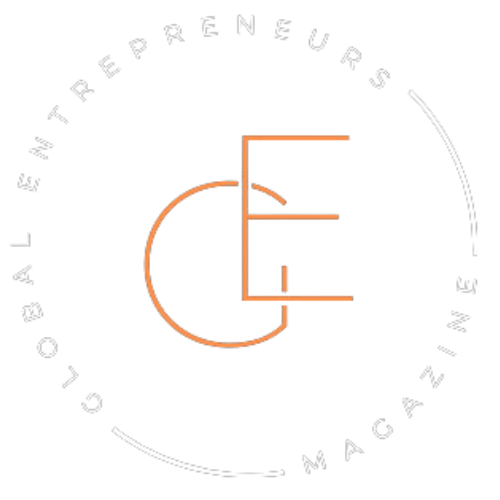There’s a version of the story we love to tell — the clean arc, the “aha” moment, the meteoric rise that follows a brave decision. But real breakthrough ideas? They rarely arrive in moments like that. They show up when everything feels like it’s falling apart.
Think of the founder who pitched a hundred times and still got turned down. Not because the idea was bad, but because no one saw it yet. Think of the entrepreneur who poured their savings into a prototype, only to watch it gather dust. These aren’t moments that end up on highlight reels. But they’re the ones that matter most.
Every visionary carries a history of things that didn’t work. Ideas that flopped. Partnerships that broke down. Markets that weren’t ready. And not in a glossy, motivational-poster way — in a way that stings, lingers, reshapes you. These are the misfit moments. The ones that whisper, Maybe this isn’t for you. The ones that quietly ask, So what now?
The people who go on to build something big? They don’t always have better ideas. They just know what to do with failure when it shows up uninvited.
Why failure hits different when you’re building something new
When you’re copying a blueprint, failure feels like a misstep. When you’re drawing the map from scratch, failure feels like a warning sign.
Visionary entrepreneurs don’t just try to make a better version of something. They build what doesn’t exist yet. And that comes with a special kind of loneliness — the kind that shows up when you’re explaining your idea for the tenth time and still getting blank stares. Or when the numbers don’t make sense on paper, but something in your gut says you’re close.
The truth is, failure lands harder when you’re first. You don’t have validation to cushion the fall. No roadmap. No case study to cling to. Just you, your hunch, and a long stretch of silence from the world. And still, the ones who stick around — the ones who keep going — don’t do it because they love failing. They do it because they see something no one else sees yet.
Sara Blakely didn’t set out to disrupt the hosiery industry. She just wanted a better pair of undergarments. But before Spanx became a billion-dollar brand, she was driving door to door, pitching her product to retailers who didn’t get it. She had no experience, no fashion background, no investors — and plenty of no’s. But each rejection pointed her to something she hadn’t figured out yet. And she listened.
That’s the difference. Visionaries don’t treat failure as a verdict. They treat it like feedback no one else is hearing.
What gets built in the ashes
Failure doesn’t just kill ideas. It strips you down. Forces you to see what was holding the whole thing up — the assumptions, the ego, the borrowed confidence. And once that’s gone, something else shows up: clarity.
After her first company crumbled, Melanie Perkins didn’t jump straight to Canva. She sat with the mess. Looked at what failed. Asked better questions. Her first startup — an online yearbook design tool — barely scratched the surface of what she wanted to build. But it taught her how clunky design software really was. It showed her who struggled with it, who avoided it, who kept looking for something simpler.
So when Canva finally took shape, it wasn’t just a fresh idea. It was an answer to every pain point she’d already run into. Every unanswered email. Every buggy feature. Every lost customer. The ashes of one business became the blueprint for another.
This isn’t about optimism. It’s about pattern recognition. When you’ve failed hard enough, long enough, you stop guessing. You start noticing.
The pivot isn’t the comeback — it’s the new blueprint

Pivots get talked about like magic tricks. One day you’re sinking. The next, you’re back with a new idea and a perfect pitch deck. But in reality, pivots come from frustration, exhaustion, and a quiet voice that says, this isn’t working — not like this.
That’s what Airbnb faced when they couldn’t pay rent. They weren’t building a travel empire. They were broke, living off cereal boxes they designed themselves and sold as Obama O’s and Cap’n McCains during the 2008 election. It was a stunt — but it paid the bills. And more importantly, it taught them how to tell a story people would actually care about.
They didn’t pivot because they had a better plan. They pivoted because they had no choice. But in doing so, they found something deeper: how to connect with real humans, not just users. That shift didn’t show up in the metrics right away, but it rewired the way they built everything after.
The pivot isn’t the hero moment. It’s the part where you finally stop clinging to the version of the idea you wanted to work and start building the one that actually can.
Learning to stomach uncertainty (not escape it)
There’s a kind of calm that shows up after your worst-case scenario already happened. You pitched, it flopped. You launched, no one came. You gave it everything — and it still wasn’t enough. And somehow, you’re still standing.
Visionary founders get used to that feeling. They don’t enjoy it. But they stop being afraid of it. Because after a while, uncertainty stops feeling like chaos and starts feeling like territory you’ve already walked through. It becomes familiar.
Ben Silbermann, co-founder of Pinterest, spent years trying to get traction. His first idea barely registered. Investors weren’t impressed. Users didn’t care. But he kept tweaking, not because he was sure it would work — but because he was willing to keep looking. He passed out flyers to strangers. Emailed users one by one. Watched how they moved through the product. The uncertainty never left. He just learned how to keep building inside of it.
You can’t think your way out of uncertainty. You have to work inside it long enough to make something that sticks.
Why failure is proof you’re asking the right questions
The first version of the idea flopped. Then the second one stalled. But something about the problem still kept pulling you back. That’s usually the sign.
Most people walk away when the thing doesn’t click the first time. Visionaries, on the other hand, keep circling the same question. Not because they enjoy punishment, but because they know the itch won’t go away until something works.
James Dyson went through over 5,000 prototypes before building the vacuum that finally did what he envisioned. Not because he loved failure — but because each version taught him something the last one couldn’t. The question stayed the same: How do I make this actually work? The answers just kept getting sharper.
Failure has a way of pointing at something real. Something that matters. When a bad idea collapses, it clears space. What you do with that space is what separates the ones who move on from the ones who move up.
Failures don’t fade — they fuel
There’s this quiet assumption that once you succeed, all the past failures disappear. But they don’t. They linger. They stay in the wiring. They shape how you make decisions, how you hire, how you build. And if you’re honest, they’re the reason you even got here in the first place.
The founder who was ignored becomes the founder who listens harder. The one who lost everything learns how to protect what matters. The one who kept going — even when no one clapped — becomes the kind of leader who knows how to stand alone when it counts.
Breakthrough ideas rarely come from a clean slate. They come from the wreckage. From the missteps and wrong turns and things you swore would work but didn’t. That wreckage isn’t baggage. It’s raw material.
So when failure knocks, it’s not just a test. It’s a furnace. And the ones who walk through it don’t come out unburned — but they come out building with fire.




